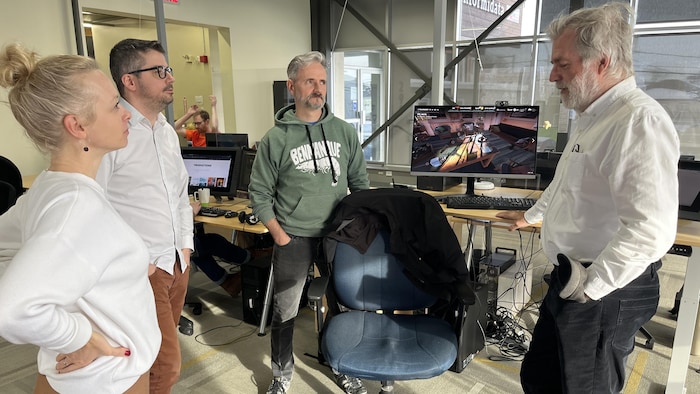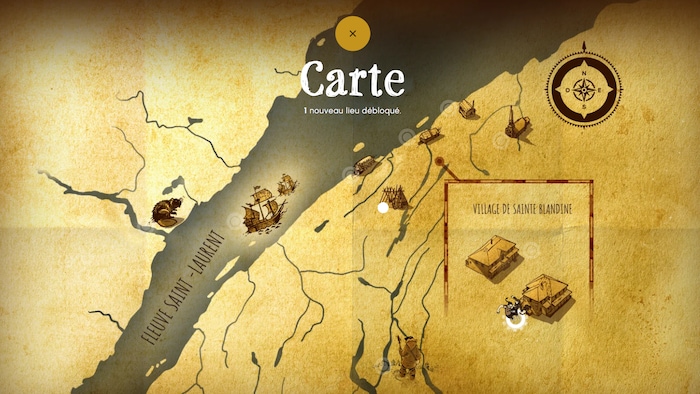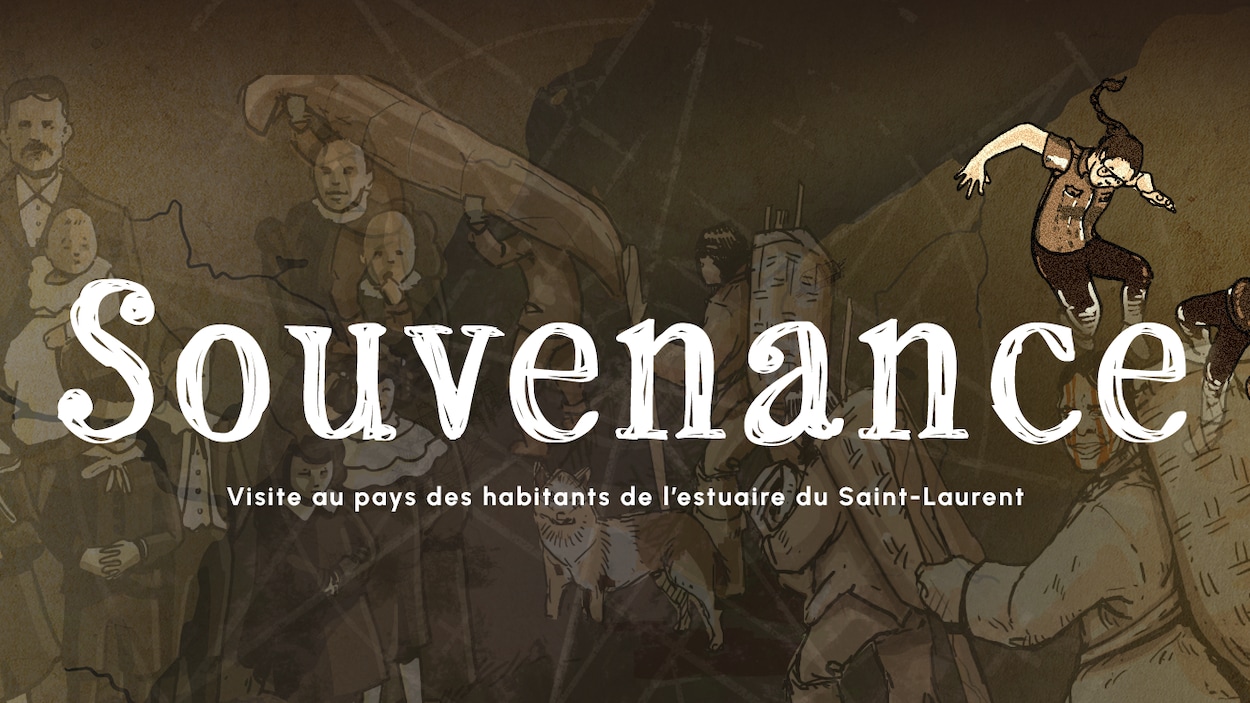Companies and organizations from Bas-Saint-Laurent have jointly developed an educational and entertaining game that aims to share the history of those who inhabited the estuary of St. Lawrence through the ages.
Memory has been online since November and is intended primarily for high school students, but also for the general public. It allows you to travel back in time and explore historical places, as if you were there.
The game highlights the Wolastoqiyik and Mi’gmaq lifestyles, as well as the Basque hunting methods. We went there. We took 360° videos and photos and gave them to our 3D artist for inspiration
explains the originator of the project, Robert Baronet.

The educational and entertaining game “Souvenance” is a project of the Matan company Cube Noir Innovation.
Photo: Radio-Canada / Xavier Lacroix
The internet user can move between 14e and the 21ste century and have an impressive experience thanks to the reconstruction of locations along the mouth of St. Lovre. By scanning objects from that period, wigwams, instruments, we recreated the location of the places that people visited at that time
adds the man who is also the founder of IDHP, a company specializing in images, especially photogrammetry, a technology that enables the creation of three-dimensional content.
The company Cube Noir Innovation from Matan was in charge of programming and designing the game’s cutscenes. Our visual artist, Mathieu Brien, worked with Robert Baronet. They were work sessions livewhere Mathieu drew Robert’s words
mentions digital media director Marie-Ève Gagnon.

The online game Souvenance allows you to immerse yourself in the communities that lived along the St. Lawrence since the 14th century.
Photo: Taken from the website souvenir-estuaire.ca
A scientific committee made up of teachers and experts as well as members of indigenous communities confirmed the information found in the game Memory.
Museums and private collectors also participated in the $350,000 project, which is 70% funded by the Digital Museums Canada program. The rest was taken care of by various partners, including the project holder, the Société Rimouskoise du Patrimoine.
The project mobilized stakeholders from the entire eastern part of the country. We’re talking about Nova Scotia all the way to Quebec City. (…) It is a project of a national scale and that is why we intend to export it
proudly announces the general manager of the organization Louis-Patrick St-Pierre.
With information from Xavier Lacroix

